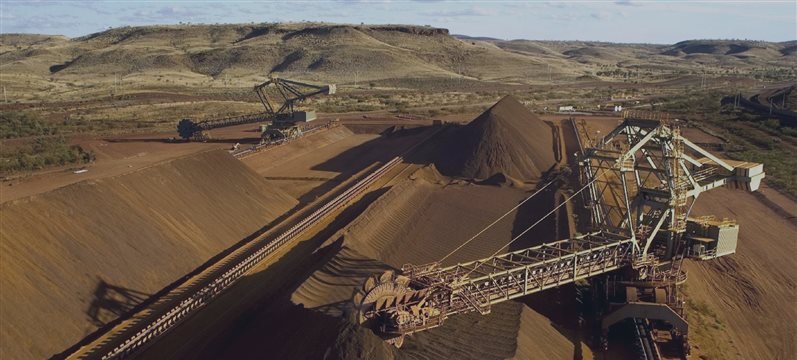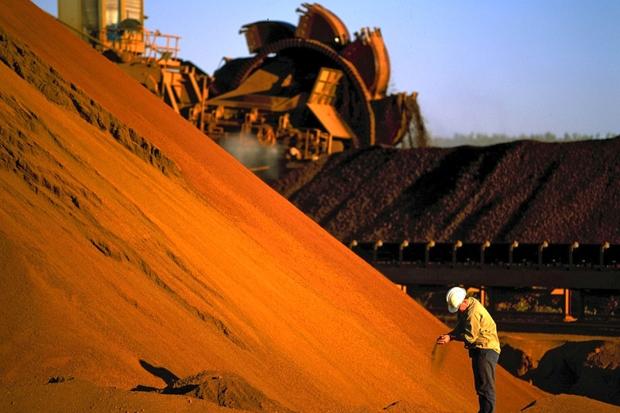A merger with Rio Tinto is a no-brainer for Glencore and its boss, Ivan Glasenberg, but the idea is less compelling for Rio chief executive Sam Walsh, the rest of Rio's board and Rio's shareholders, considers The Sydney Morning Herald's analyst. Rio's earnings are less highly valued than Glencore's, but its market capitalisation of $US91 billion ($103 million) still comfortably beats Glencore's market value of $US57 billion. It is exposed to the decline in the iron ore price, but owns long-life, low-cost mines that are still generating big profits, and will not accept an offer that marks them down heavily for the current price weakness.
The price to get Rio to the altar will be high. At the same time, Glencore is well placed to make an offer loaded with its shares.
The speculation inside Rio is that the Glencore camp let word out about its merger approach to Rio in July, and Rio's rejection of it. Putting it into the public domain potentially enlists Rio shareholders to the cause. The July talks were very preliminary in nature, and Rio had its reasons to show Glencore the door.
It sees itself as a specialist top-drawer miner with a marketing business attached, and sees Glencore as the reverse – a specialist commodities trader that after last year's takeover of Xstrata has a portfolio of mining assets that will also be traded if the price is right.
Source: The Times
Rio believes that there is a cultural mismatch between Rio's development of long-life, low-cost, high-return mining businesses and Glencore's more aggressive asset-trading model. It also sees its giant low-cost iron ore mining business as a strength despite this year's declines in the iron price, and sees Glencore's heavy exposure to coal as a weakness.
There would have been more questions if Rio had engaged in detailed talks with Glencore in July. Rio's Australian shareholders are for example holding shares in dual-listed Rio that are valued 10 per cent more highly than Rio's London-listed shares. Somehow, some way, they would need to get more.
Competition regulators are another hurdle if Glencore offers more, and talks resume. Iron ore was the big regulatory barrier for BHP Billiton's aborted 2008 takeover offer for Rio, and the proposed BHP-Rio joint venture in the Pilbara that was abandoned two years later. Coal assets would be the main focus in a Rio-Glencore deal.
Glencore has its own reasons to chase Rio, and to not take the rejection in July as the final word.
First, its shares are valued at 15 times expected earnings this calendar year, compared with just over 10 times expected earnings for Rio.
This year's 41 per cent slide in the price of iron ore is the culprit as far as Rio is concerned. The group is still making good money in the Pilbara, but it is exposed to the price slide: in the June half, iron ore supplied three-quarters of its gross profit.
Glencore's higher price-to-earnings ratio gives it a powerful currency for a merger paid for with shares. It is an advantage that Glasenberg cannot assume will last, and iron ore is also a missing component in the commodity mining and trading portfolio that he pulled together last year with the takeover of Xstrata.
Owning Rio would make Glencore a more powerful commodities trading organisation, with leadership in commodities including iron ore, copper, nickel, zinc and coal, according to Britain's Bernstein Research.
Citigroup says that Glencore would also be able to borrow more if it acquired Rio. Rio has been cutting debt to lock in an A-grade credit rating, but Glencore maintains only a B-grade rating. If it reset Rio's balance sheet to B, it could borrow more against Rio's assets.
Glasenberg has also been a strong critic of the way other miners including Rio and BHP Billiton have pushed down commodity prices by aggressively expanding production of commodities including iron ore. There is potential for Glencore to "bring Glencore's capital discipline to bear on an iron ore market in need of leadership and bring it into a balanced market," Citi says.
Rio's shareholders would of course share in any gains created by a merger that was paid for with Glencore shares. The big question, however, would be how the the spoils were divided.
Although Rio's earnings are less highly valued than Glencore's, its market capitalisation of $US91 billion ($103 million) still comfortably beats Glencore's market value of $US57 billion. It is exposed to the decline in the iron ore price, but owns long-life, low-cost mines that are still generating big profits, and will not accept an offer that marks them down heavily for the current price weakness.
A longer view of what Rio is worth is also likely to be held by Chinalco, Rio's 9.8 per cent shareholder. The Chinese group acquired its stake in 2008 when BHP was trying to take over Rio. Even after a rise in Rio's share price on news of Glencore's approach, its holding is worth only half as much as it paid.
It might be prepared to sell at a paper loss if it believed it was receiving shares from Glencore as part-payment that gave it a continuing interest in a larger, more powerful and more profitable combined business. The value it would put on its stake would be significantly above Rio's current share price, however: if Glencore still wants Rio, it has work to do.




